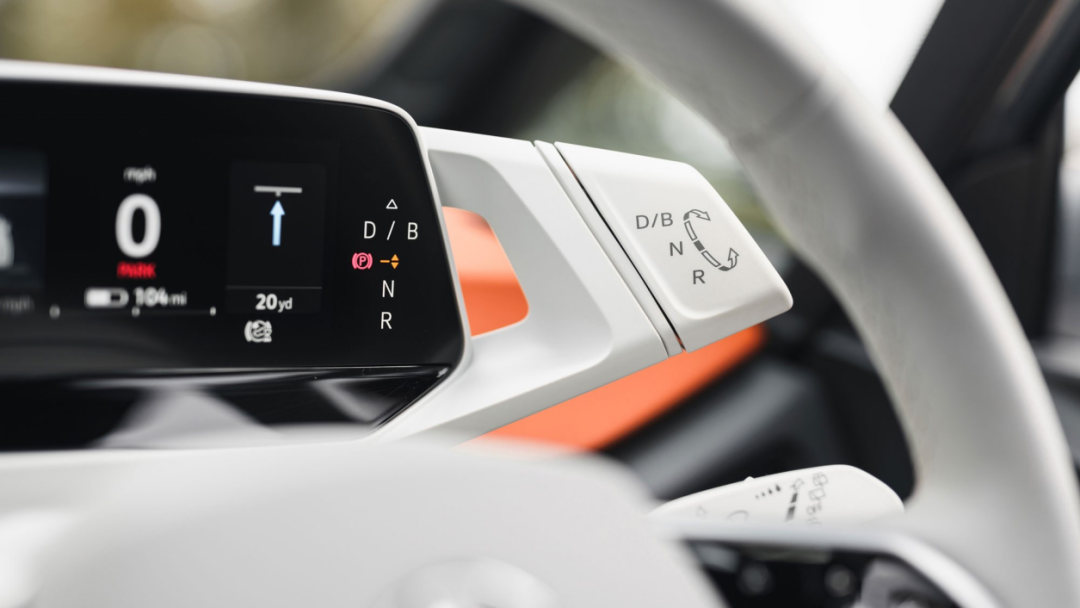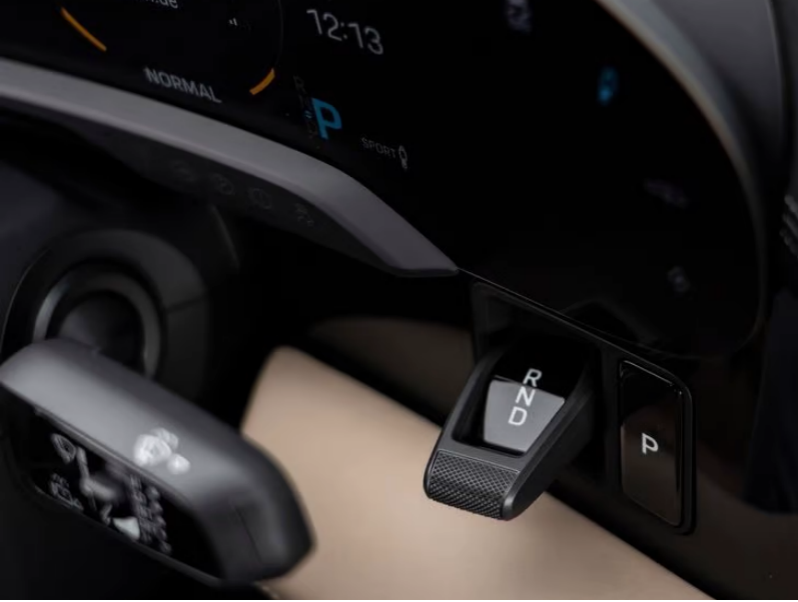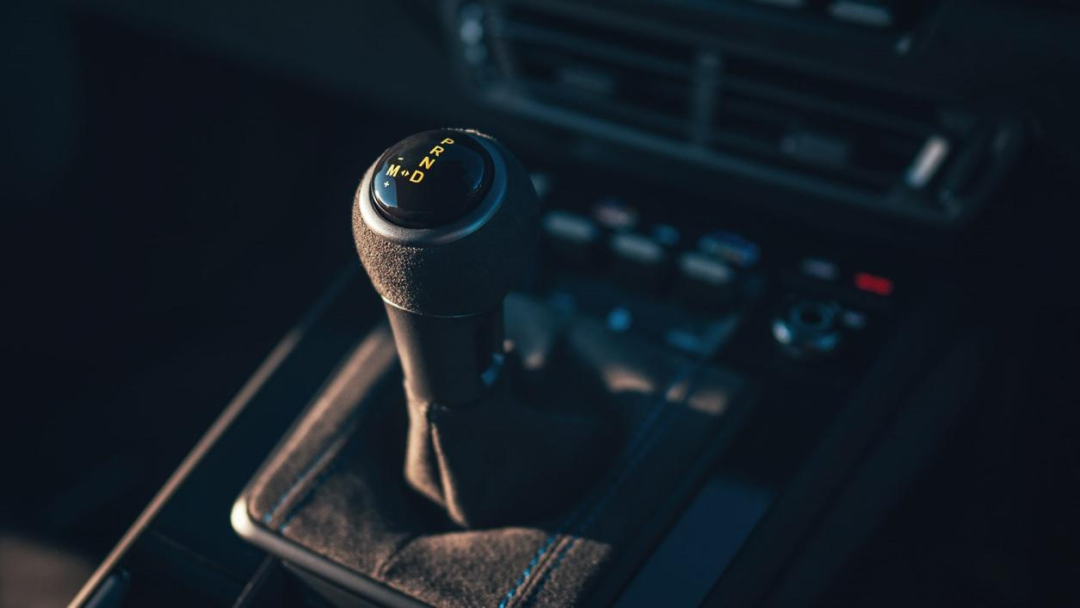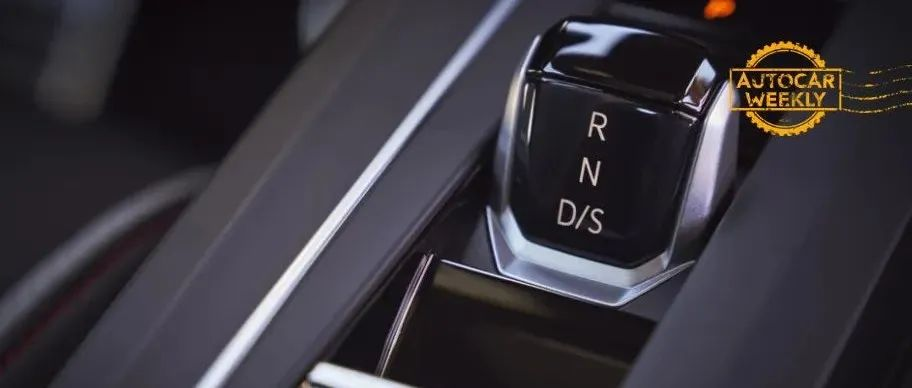Woof Woof Hu
If the gear lever for new cars keeps getting smaller, media photographers might need to bring macro lenses with them.
You may have noticed the variety of shift knobs in new cars lately. We’re not talking about the age-old argument between manual and automatic transmissions, as the disappearance of manual transmissions is now old news. Even among the sea of automatic transmissions nowadays, it’s rare to find a “normal” shift knob that can fill a hand or be easily gripped.
Porsche 911 (992) has adopted an unusual but extraordinarily small electronic shift knob, almost exclusively operable with a few fingers. Continuing the trend, we now see much smaller and more radical shift knobs on models such as the eighth-generation Volkswagen Golf and Audi A3 – if you can even call them “knobs”.
If you thought shift knobs couldn’t get any smaller, think again. Take a look at NIO’s shift-by-wire gear selector, or BMW iX’s crystal-like gear selector, or Peugeot 2008’s fully embedded shifting rocker, each representing the ultimate form of shrinkage for traditional center console shift knobs.
Beyond these compact shift knobs and “knob-like objects,” there are other pioneers in the “No Shift Knob” campaign, such as rotary shifters, button shifters, and even “rocker” shifters.
Volkswagen’s ID series transforms shift knobs into a structure that extends to the right of the instrument panel, while Porsche Taycan moves the small “stick” designated for 992 to the conventional ignition switch position. In terms of operation, each of these can be seen as a form of pseudo-shifter.

It is understandable for someone to sit in a new car for ten minutes and still not be able to locate the gearshift lever or understand how to engage the Drive mode.
From the Mechanical Age to the Digital Revolution
For traditional manual transmissions, the gearshift lever naturally belongs on the center console.
The reason is simple. In the early days, cars had longitudinally-mounted engines, so the transmission was usually located beneath the center console of the front row. As the name suggests, manual transmissions rely solely on muscle power to shift gears, and the gearshift lever naturally protruded from the top of the transmission and into the position we are familiar with.

Later on, with transversely-mounted engines and automatic transmissions, people had already become accustomed to the basic layout of operating a car, and thus, even for automatic transmissions, the gearshift lever remained in the center console.
In fact, for automatic transmissions, the gearshift lever uses electric signals transmitted via wires to communicate with the gearbox rather than mechanical transmission. Theoretically, the gearshift lever can be designed in various forms.
The console-mounted gear selector of American vehicles is well-known for its design, but it is not the only one as button shifters were popular on American cars in the 1950s and 60s. The locations of these button shifters were diverse, with some near the center console, some on a separate small platform, some on the left side of the dashboard, some on the left light panel, and some even placed at the center of the steering wheel.


However, the design of the gearshift lever was not fully liberated at that time.
First, except for the North American market at that time, where people were indulging in luxury, manual transmissions were still the absolute mainstream in other parts of the world, especially in Europe. Therefore, interior designers still had to focus on traditional gearshift design. The use of similar gearshift lever designs for automatic transmissions not only avoided drivers having to re-adapt but also ensured that interior designers did not have to make additional efforts in this regard.
Moreover, while the automatic transmission at that time was signal input, the degree of digitization was not comparable to today’s. After all, both 90s cell phones and today’s iPhone 13 rely on electricity. Drivers who have been driving for a long time should remember a series of anti-malfunction designs on early automatic shifters: reverse gear must press a particular button, and it is impossible to push into reverse gear while driving.

These are implemented by the sophisticated mechanical structure inside the shift lever, so the automatic transmission shifter is not just a simple electrical switch. Under the shifter, there is a “big lump,” which includes electronic components identifying the shifter movements, outputting instructions to the gearbox on the other end of the wire, as well as providing appropriate damping and malfunction protection with springs, plastic buckles, sliders, and other mechanical structures.

Of course, there are also small volume solutions – otherwise, how can American luxury cars shift gears so carefreely? However, for most models, the space under the center console is idle, and simple, inexpensive, and reliable “dumb methods” are still the mainstream choice. Until the recent decades, with the increasing level of digitalization of automobiles, the mechanical burden in the automatic shifter has been gradually stripped away.
So the era of electronic shifters arrived.
Our initial impression of electronic shifters was mainly from BMW’s famous “big chicken leg” in the early 21st century. The electronic shifter no longer jumps between gears, but switches between gears by recognizing light flicks, and the shifter itself remains upright all the time.

The first-generation electronic shifter of BMW still had mechanical anti-malfunction: the shifter damping was controlled by a signal, and it could not be pushed when the car was parked and turned off. Pushing into reverse gear while driving was also impossible. However, the shifter soon became completely electronic, and you can push it in any direction at any time – the onboard computer will automatically recognize and filter out your reckless operation.
Because of the presence of the electro-mechanical mechanism, the volume under the shifter of the first-generation “big chicken leg” is not much smaller than that of the traditional automatic shifter. But today, in addition to the shifter body, the hidden part of BMW’s electronic shifter is small enough to be negligible, and it can be placed anywhere inside the car.


When the final mechanical structure is no longer necessary, the only things that limit the form of the gear lever are habits and imagination.
Special levers for special you
Another name for electronic gear lever is “Shift-By-Wire/SBW” – in fact, this is the only part of the cable-controlled chassis that has already been put into practical use and even gradually popularized.
You will find that the magical shifting mechanisms mentioned at the beginning are mostly from electric cars. This is not due to any structural or theoretical differences between gasoline-electric and traditional cars, but because gasoline cars and traditional car companies are relatively restrained in the design of gear levers, while electric cars and emerging brands are more “carefree” about conventional habits.

The most restrained method is: the location remains unchanged, and the shape is “devoid of grip sensation”. AMG GT has degraded the gear lever to a “small pillow”, which can be used as a wrist rest for the touchpad in front, Peugeot has come up with an aviation-style joystick gear lever, and the gear lever of Audi e-tron has drawn inspiration from aviation elements, and can also support the wrist when operating the touch screen.
At least, if you sit in the car for the first time, it is not difficult to find “which thing is used to shift gears”.

Some styles are far from the gear lever, but they have become popular, so they won’t leave you bewildered, such as rotary knob gear lever, stalk gear lever, push-button gear lever.
The rotary knob gear lever stunned the world on the Jaguar XF in 2008 and has since become a iconic design of Jaguar Land Rover. Afterwards, the knob has been favored by many car brands at different levels and different market segments, and has become somewhat excessive. Brands that value design more generally do not consider it as their first choice.

The stalk gear lever was once a symbol of American cars, and later became the joy and pain of Mercedes-Benz owners. Now, with the popularity of electronic gear levers and the drive of electric cars, it has finally been revived and re-entered the mainstream.The shifter area will become increasingly crowded, but Tesla has endowed the shifter with a new historical mission: to serve as the control lever for the automatic driving assistance system, while retaining the traditional advantages of blind operation for traditional shift levers.
The disadvantage is often criticized for its lack of driving feeling, but it is no longer as important as the electric vehicle identity changes. The shifter must occupy limited steering column space, but with rain and light sensing now automatic, coexistence with the shifter is no longer a problem. Moreover, there are also like the Volkswagen ID., which integrates the shift lever into the dashboard, forming a “no longer the obvious shifter” design.

The button shifter was used in American luxury cars in the 1960s, and Aston Martin and Lincoln have also been insisting on it for many years, and it is now gradually becoming popular. The requirement for button shifter placement is almost negligible and can be arranged throughout the car. The arrangement of the buttons can be arranged in any way, in a straight line, in an array or using piano keys, highlighting any one of them.
But button shifting is unfavorable for blind operation. No matter how the buttons are arranged, the driver needs to shift more attention to the buttons to ensure accurate pressing; because the buttons are usually arranged on the surface of the center console, the right hand needs to reach further to touch them. When frequently switching between D/R gears, such as narrow road turning and parallel parking, it can be particularly cumbersome and inconvenient.
Even for the minimized toggle switch shifter, because there are only two operation directions of forward and backward, it is more convenient in this scenario than distributed button shifting.

If button shifter wants to balance convenience, one approach is to combine “pressing” and “turning.” Acura designed the reverse gear to be pressed backward so that it is separated from other gears; the Buick shifter buttons are arranged in a column, with the R and D gears as upward toggle switches, separated by the middle N gear, which is pressed downward, to a certain extent improving blind operation.


Furthermore, it is possible to completely eliminate the shifter lever, regardless of whether it can still be called a “lever” or not.Tesla is a faithful follower of Occam’s Razor. Last year, the new Model S Plaid not only brought a sci-fi-inspired Yoke steering wheel, but also a mind-blowing gear selector: the onboard computer determines forward or reverse, automatically engages the corresponding gear, or…ahem, shifts gears by swiping on the touchscreen.

But if we look only at gear levers, the complete removal of the “lever” is not a new development. Some high-performance sports cars that prioritize extreme driving have handed the task over entirely to paddle shifters, with neutral often activated by simultaneously pulling both paddles, leaving only a button or lever for shifting into reverse.


Even for high-performance vehicles, paddle shifters are already far superior to gear levers in terms of operational efficiency during extreme racing. The need to shift gears by hand, which is now only evident in high-end performance cars, is only for those who highly value the experience. In Porsche’s 911 (992) series, the GT3 is the only model with a “serious” gear lever (PDK), a relief for its target users and dream users alike.


As gasoline power slowly fades away, for pure electric vehicles that do not require a gearbox, gear positions are nothing more than “forward”, “reverse”, and “park”. Even for remaining gasoline cars, the vast majority no longer require drivers to operate the gear lever for extended periods of time and frequently. The physical shrinkage and alienation of its form is inevitable.
People tend to think that high-performance sports cars, which were once considered the last bastion, have turned to paddle shifters, a more practical solution. As for the general public, they only need to move forward and backward. Those who still pursue the “traditional” gear lever on the center console, except for manual transmission models, are only left with the “I won’t let you take away my right to play with the gear lever, even if it’s an automatic with paddles” type, such as the GT3.
The once hormone-fueled gear lever in the car is evolving into a plain old “switch”.
However, this is not a matter of mourning.
Fundamentally, the source of the physical existence of the gear lever is the manual transmission. When automatic transmissions (including AT/DCT/CVT, etc.) appeared, their operating mechanisms continued to exist in the form of (similar to manual transmission) gear levers. This was originally the result of conforming to reality and habits, rather than a necessity of function. This has been proven by American cars of the 1950s and 1960s.
So when fuel-powered vehicles become highly automated and digitized, and the electric era arrives, gear positions lose their meaning, and it is more suitable to operate them in the form of some kind of switch for utility. There is no need to forcibly add embellishment.
They go as they come, and are honest in conforming to functionality.
This article is a translation by ChatGPT of a Chinese report from 42HOW. If you have any questions about it, please email bd@42how.com.
